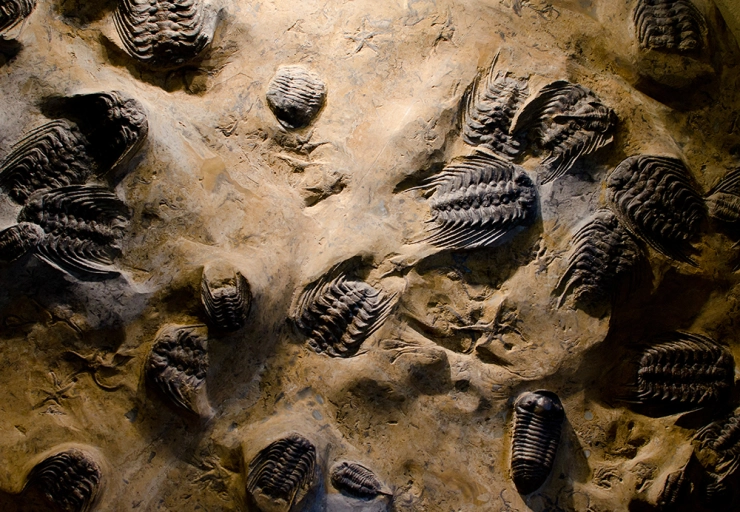Tracing the Ties of Time: Unveiling Common Ancestry and Transitional Evolution through Fossil Similarities
Posted on February 5, 2024 • 5 minutes • 918 words
Table of contents
In the fascinating realm of evolutionary biology, scientists often encounter intriguing puzzles that beckon for a deeper understanding of life’s intricate history on Earth. One such puzzle emerges when researchers notice structural similarities between the fossils of a land animal and an aquatic organism, despite clear evidence that these resemblances are not the result of both species adapting to similar environments. This observation raises a compelling question: if not convergent evolution, then what can these structural similarities be attributed to? Could it be a glimpse into the ancient ties that bind all life through common ancestry or transitional evolution, or might there even be a link to similar mating habits despite the vastly different habitats of these organisms?
This article aims to explore these possibilities. By delving into the depths of evolutionary theory, we will investigate how the shared structures between terrestrial and aquatic life forms can reveal the hidden narratives of divergence and transition that have sculpted the diversity of life on our planet. Through this exploration, we not only seek to answer this intriguing question but also to celebrate the complex web of connections that underpin the natural world, highlighting the unity and diversity that evolutionary processes engender across the eons.
Introduction
When scientists observe structural similarities between fossils of a land animal and an aquatic organism, and they determine these similarities are not due to convergent evolution (where unrelated species independently evolve similar traits as a result of having to adapt to similar environments), several alternative explanations can be considered. The most plausible explanations for such similarities include common ancestry, transitional evolution, and, though less directly related to physical structure, similar mating habits might offer ancillary insights into evolutionary pressures. Let’s explore these concepts further.
| Fossils |
|---|
 |
Common Ancestry
The concept of common ancestry posits that organisms share similarities because they descended from a common ancestor. This principle is a cornerstone of evolutionary biology, suggesting that all life on Earth is connected through a vast tree of life. If scientists observe structural similarities between a land animal and an aquatic organism, these similarities might be attributed to traits inherited from a common ancestor that lived millions of years ago.
| Common ancestry |
|---|
 |
Over time, descendants of this common ancestor could have diverged into different habitats (terrestrial and aquatic), undergoing various evolutionary changes while still retaining some of the ancestral traits. This phenomenon is part of what’s known as divergent evolution, where species sharing a common ancestor evolve different traits due to adapting to different environments or ecological niches.
Transitional Evolution
Transitional evolution refers to the process through which a species evolves into another, often leaving behind transitional forms that exhibit traits of both the ancestral and the new forms. These transitional fossils can provide evidence of the evolutionary path from one form to another.
| Transitional fossils |
|---|
 |
When scientists find structural similarities between fossils of a land animal and an aquatic organism, these may represent transitional features that indicate a stage in the evolution of one form to another. Such fossils are crucial for understanding the evolution of specific traits and how organisms adapt to new environments over time.
Similar Mating Habits
While similar mating habits do not directly explain structural similarities, they can provide context for understanding selective pressures that might influence the development of certain traits. For example, if both a land animal and an aquatic organism have evolved similar mating displays or mechanisms, this could suggest that similar selective pressures around reproduction could indirectly influence the evolution of certain structural traits.
| Mating habits |
|---|
 |
However, this connection is more tenuous than those made through common ancestry or transitional evolution, as it speaks more to behavioral evolution and the role of sexual selection in shaping species.
Conclusion
In most cases, when scientists notice structural similarities between fossils of a land animal and an aquatic organism that cannot be attributed to convergent evolution, the explanations of common ancestry and transitional evolution are the most scientifically robust. These concepts directly address how physical structures can be inherited from common ancestors or how they can evolve as species transition from one form to another over geological timescales. Similar mating habits, while interesting for understanding evolutionary pressures, are less directly related to structural similarities unless those similarities are directly tied to reproduction. Overall, the study of such fossils and the similarities they reveal is essential for piecing together the complex puzzle of life’s history on Earth, illustrating the interconnectedness of all living things through the lens of evolution.
References
- Darwin, C. (1859). On the Origin of Species by Means of Natural Selection, or the Preservation of Favoured Races in the Struggle for Life. John Murray. This seminal work introduces the theory of natural selection and lays the groundwork for evolutionary biology.
- Futuyma, D.J., & Kirkpatrick, M. (2017). Evolution. Sinauer Associates, Inc. This textbook provides a comprehensive overview of evolutionary biology, including the mechanisms of evolution, phylogenetics, and the fossil record.
- Prothero, D.R. (2007). Evolution: What the Fossils Say and Why It Matters. Columbia University Press. This book offers insights into the fossil record and its importance for understanding evolutionary processes.
- Ridley, M. (2004). Evolution. Blackwell Publishing. Ridley’s text is another foundational resource that covers various aspects of evolutionary theory, including sexual selection, speciation, and evolutionary genetics.
This article answers the question:
“Scientists notice structural similarities between fossils of a land animal and an aquatic organism. They know the similarities are not a result of the two organisms having to adapt to similar environments. What can they attribute the structural similarities to?"
Share
Tags
Counters

